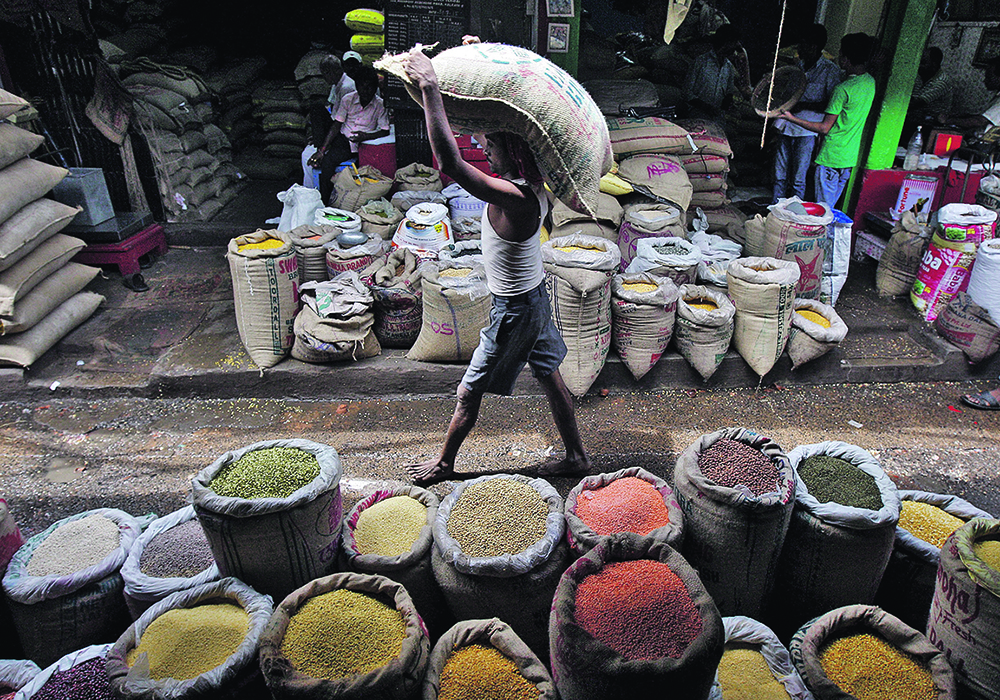Exporters work within government’s efforts to keep crop prices high enough for farmers but low enough for consumers
Despite India’s hopes of becoming self-sufficient in food and crop production, a leader of a powerful farm group in that country recently told the Canadian pulse and special crops sector that Canada can play an important role in the giant nation’s needs.
“There are lots of opportunities where Pulse Canada and (the National Agricultural Cooperative Federation of India) can further work upon, and we should, devise a road map,” said Sunil Kumar Singh, additional managing director of NAFED, in an address to the Canadian Pulse and Special Crops Convention.
India is a perennial hope and fear for Canada’s pulse and special crops farmers and exporters. It is an enormous market that is actively promoting the consumption of pulse crops, but it also has a tradition of market intervention to manage domestic prices.
Read Also

Exports off to a slow start after last year’s torrid pace
Canadian grain, oilseed and pulse exports are off to a slow start, but there are some bright spots, according to the Canadian Grain Commission’s most recent weekly export data report.
When Indian domestic crop prices get too high for consumers to bear, in the view of the government, imports are often allowed to bring down those prices. When prices are too low for farmers to make money, however, the government has often intervened by blocking imports.
This has made India a vexing market for exporters such as Canada, which can never count on being able to make sales to the country. Canada does not have a trade deal with India, so there is little governing whether or not India accepts imports.
Indian government officials also often flummox Canadian trade representatives by stating their country’s determination to become self-sufficient in its food needs. For exporters like those in Canada, that doesn’t sound like a growing market.
However, the reality inside India is much different. Hundreds of millions of people eat far less, and much less nutritious, food than they or their government would like. India embraced the United Nations’ year of pulse crops as a way to improve poor people’s lives, especially by adding a form of plant-based protein that would simultaneously improve farmers’ rotations.
Singh seemed to be suggesting that India would continue importing pulses as long as domestic prices don’t fall too low. The government wants prices high enough to encourage Indian farmers to grow as much as they can, but also wants to be able to provide pulse crops to poor people who cannot afford those prices. Importing pulses to provide enough for both middle class and poor consumers gives room for Canadian product.
“You shall have prosperity for your farmers and nutritional advantages for our consumers,” said Singh.
NAFED’s presence at this convention began in 2019 and its officials’ presence is appreciated by Pulse Canada and the rest of the pulse trade, which spends much time attempting to understand the complexities of India’s food and trade policies.
Singh was joined for the conference by two vice-chairs of the organization, forming a gentlemanly contingent of senior Indians in a conference that also featured numerous other South Asians and representatives of 21 countries other than Canada.
India’s balancing act of encouraging Indian farmers to grow pulses, which requires prices high enough to give them a profit, with its desire to provide its teeming masses with the nutritional benefits of pulse crops, which requires affordable pulse products, has encouraged other exporters to attempt to supply the subcontinent.
Brazil and Australia are both growing and exporting specific pulses for India, ones whose supplies have been reduced by “incessant rains” and other weather events, Singh said.
“They’re trying to grow these two particular pulses in those countries to supplement the efforts of the government of India to meet the growing demand,” said Singh.
When domestic stocks fall low, there is a feeling among many in India that local traders attempt to corner the market on available supplies and squeeze prices higher.
As long as Indian farmers are being encouraged to grow more and more of their own pulses, Singh sees a need for imported pulse crops to “enable more and more stocks to flow in when the added supplies from Canada, Australia … can meet the domestic demand and curb the speculation … which is important.”


















